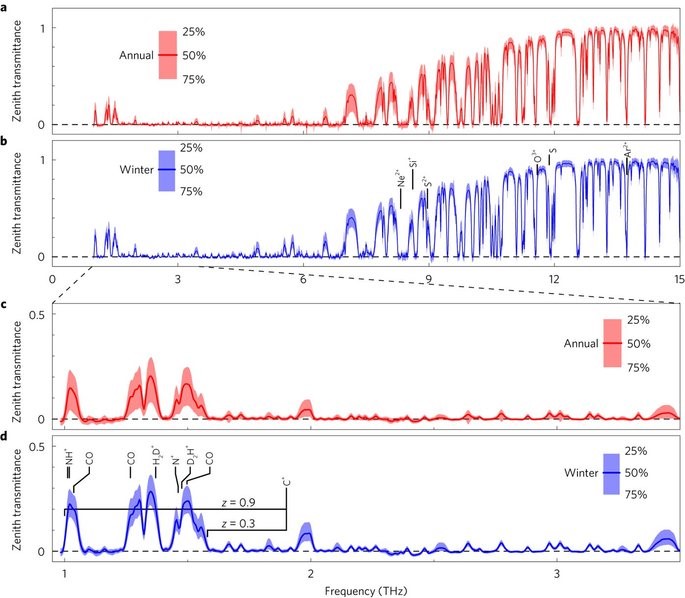The terahertz and far-infrared band, ranging from approximately 0.3 THz to 15 THz (1 mm to 20 μm), is important for astrophysics as it hosts the peak of the thermal radiation of the cold component of the Universe as well as many spectral lines that trace the cycle of interstellar matter. However, water vapour makes the terrestrial atmosphere opaque to this frequency band over nearly all of the Earth’s surface.
Early radiometric measurements below 1 THz at Dome A (80° 22′ S, 77° 21′ E), the highest point of the cold and dry Antarctic ice sheet, suggest that this site may offer the best possible access for ground-based astronomical observations in the terahertz and far-infrared band.
Sheng-Cai Shi, professor of Purple Mountain Observatory of CAS, and his international cooperators developed a remotely operated Fourier transform spectrometer (FTS), which was deployed to Dome A by the 26th Chinese Antarctic Research Expedition (CHINARE) team during the 2009/2010 traverse ( See Fig. 1).

Fig. 1 FTS at Dome A in Antarctica (Image Courtesy from Purple Mountain Observatory of CAS)
They carried out their measurements of atmospheric radiation from Dome A with that Fourier transform spectrometer. The transmittance statistics were presented in Fig. 2.

Fig. 2 Zenith atmospheric transmittance spectra measured at Dome A, Antarctica, during 2010–2011.a–d, Spectra are shown for the entire year (a,c) and for winter (April–September) only (b,d). Quartile statistics for each frequency channel were compiled independently. Solid lines indicate the median transmittances, and the shaded regions show the interquartile ranges. To account for irregular time sampling throughout the year, data were de-biased as described in the text. Frequencies of several astrophysically important spectral lines are indicated; note that some of these lines are observable only at certain non-zero redshift values z. (Image Courtesy from Nature Astronomy)
Prof. Shi’s measurements reveal substantial transmission in atmospheric windows throughout the whole band.
They found that current spectral models significantly underestimate the H2O continuum absorption.
Their measurements at Dome A have provided new constraints on the spectral absorption of water vapour that are important for modelling radiative processes in the cold upper troposphere and for retrieving atmospheric properties from outbound spectral radiance measurements.
Their study showed that the Antarctic dome A provides new opportunities for astronomy and atmospheric science research.
The research results has been published online in Nature Astronomy.
http://www.nature.com/articles/s41550-016-0001
(Information Source: Nanjing Branch of CAS)

